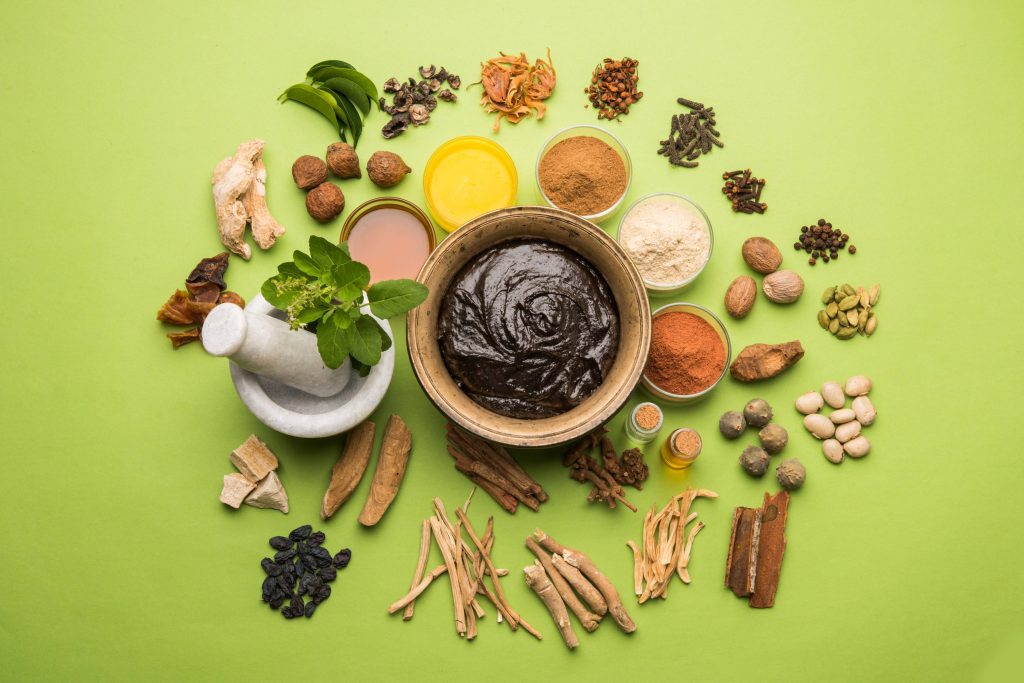
The Pueraria genus, belonging to the Fabaceae family, includes several leguminous plants native to Asia. Among them, Pueraria mirifica has gained global recognition for its rejuvenating and estrogenic properties. However, it is often confused with other species such as Pueraria lobata (kudzu) and Pueraria candollei. Let’s see the comparison between Pueraria mirifica and other Pueraria species.
Although these plants share botanical similarities, their phytochemical compositions, biological activities, and clinical applications differ significantly. This article explores how P. mirifica stands apart from its relatives, supported by scientific research.
1. Botanical and Geographical Differences
- Pueraria mirifica: Found primarily in northern Thailand and Myanmar, this tuberous plant has a long history in Thai traditional medicine for rejuvenation and hormone balance.
- Pueraria lobata (Kudzu): Native to China, Japan, and Korea, commonly used in traditional Chinese medicine for treating fever, intoxication, and cardiovascular disorders.
- Pueraria candollei: Distributed in Southeast Asia, sometimes used as a substitute for P. mirifica, but contains less potent estrogenic compounds.
(Suthon et al., 2020; Cherdshewasart & Sutjit, 2008)
2. Phytochemical Profiles
The unique properties of P. mirifica stem from its exclusive phytoestrogens:
- P. mirifica: Contains miroestrol and deoxymiroestrol, the most potent natural phytoestrogens known, alongside isoflavones like daidzein and genistein.
- P. lobata: Rich in puerarin, daidzin, and genistin, known for antioxidant and vasodilatory effects, but with weaker estrogenic activity.
- P. candollei: Shares similar isoflavone composition but lacks miroestrol and deoxymiroestrol.
According to Cherdshewasart et al. (2008), the estrogenic potency of P. mirifica can be up to 1,000 times higher than P. lobata, depending on extract concentration and preparation method.
3. Biological and Pharmacological Activities
| Activity | Pueraria mirifica | Pueraria lobata | Pueraria candollei |
|---|---|---|---|
| Estrogenic effect | Very strong (miroestrol, deoxymiroestrol) | Mild (puerarin) | Moderate |
| Bone protection | Proven in animal and human trials (Soodvilai et al., 2006) | Limited data | Limited |
| Cardiovascular benefits | Improves lipid profiles (Laupattarakasem et al., 2009) | Supports vascular function | Unknown |
| Cognitive effects | Neuroprotective in aging models (Anukulthanakorn et al., 2016) | Antioxidant, anti-ischemic | Limited |
| Skin health | Promotes collagen and elasticity | Mild antioxidant | Mild |
Thus, P. mirifica stands out as the most potent estrogenic and anti-aging species, while P. lobata is better known for its metabolic and cardiovascular effects.
4. Clinical Evidence
- Human Studies on P. mirifica:
Randomized trials in postmenopausal women show improvements in lipid metabolism, skin health, and bone turnover without adverse effects (Laupattarakasem et al., 2009). - Human Studies on P. lobata:
Found to lower alcohol toxicity and improve glucose metabolism but lacks hormonal modulation (Liu et al., 2013).
No comparable human data exists for P. candollei, suggesting it is less clinically relevant than P. mirifica.
5. Safety Profile
Although P. mirifica demonstrates safety in short-term studies, its strong phytoestrogenic activity warrants caution among individuals with hormone-sensitive conditions. P. lobata, being weaker in estrogenic effects, poses fewer risks but also fewer hormonal benefits (Turner et al., 2020).
Product quality and dosage standardization remain essential to minimize risk.
Conclusion
While all Pueraria species share certain phytochemical similarities, only Pueraria mirifica contains miroestrol and deoxymiroestrol, giving it unique endocrine-modulating and rejuvenating properties.
In contrast, P. lobata and P. candollei offer general antioxidant and cardiovascular benefits but lack comparable hormonal efficacy.
Choosing the right Pueraria species depends on one’s goals: for hormonal balance and anti-aging, P. mirifica remains the gold standard supported by scientific research.
References
- Anukulthanakorn, K., Parhar, I. S., Jaroenporn, S., Kitahashi, T., Watanabe, G., & Malaivijitnond, S. (2016). Neurotherapeutic effects of Pueraria mirifica extract in early- and late-stage cognitive impaired rats. Phytotherapy Research, 30(8), 1363–1372. https://doi.org/10.1002/ptr.5595
- Cherdshewasart, W., & Sutjit, W. (2008). Estrogenic activity of Pueraria mirifica compared with other plants. Fitoterapia, 79(7-8), 509–514.
- Laupattarakasem, P., Prachaney, P., Navasumrit, P., et al. (2009). Pueraria mirifica phytoestrogens improve dyslipidemia in postmenopausal women. Clinical Interventions in Aging, 4, 543–552.
- Liu, I. M., Tzeng, T. F., Liou, S. S., & Chang, C. J. (2013). Improvement of insulin sensitivity by Pueraria lobata root extract in high-fat diet–induced insulin-resistant rats. Journal of Ethnopharmacology, 148(2), 563–570.
- Soodvilai, P., et al. (2006). Pueraria mirifica prevents bone loss in orchidectomized rats. Journal of Bone and Mineral Metabolism, 24(6), 555–560.
- Turner, J., et al. (2020). A comprehensive review on Pueraria: Insights on its chemistry and health benefits. Fitoterapia, 147, 104799.
Explore our website for more content: Click Here
